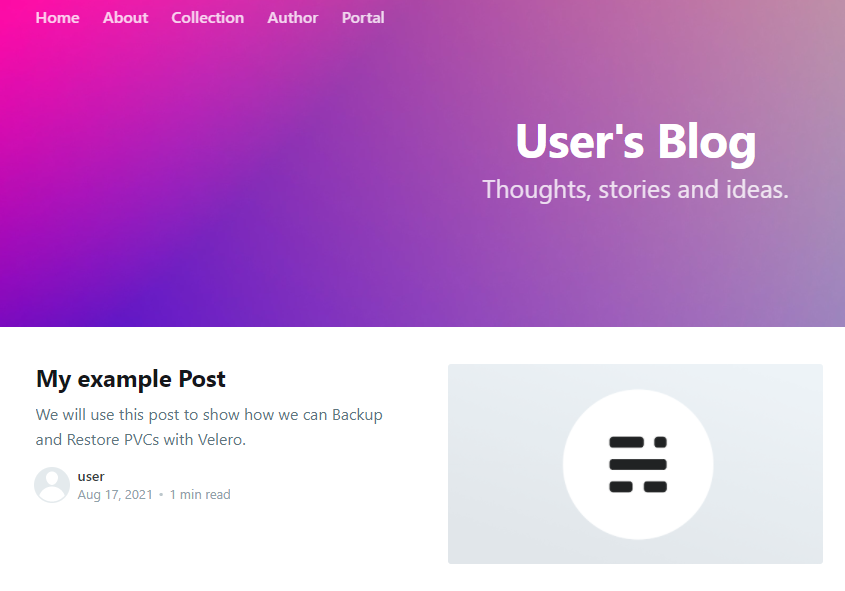Containers
Tag: Kubernetes
Protect Kubernetes workloads from Apache Log4j vulnerabilities
Log4j is among the most popular and highly used logging frameworks in Java-based applications. On December 9, 2021, the world became aware of zero-day vulnerabilities CVE-2021-44228 and CVE-2021-45105 affecting the popular Apache package. Any attacker who can control log messages or log message parameters can execute arbitrary code loaded from malicious LDAP servers when message […]
Amazon EKS launches IPv6 support
The ongoing growth of the internet, particularly in the fields of mobile applications, IoT, and application modernization, has led to an industry-wide move to IPv6. With 128 bits of address space, IPv6 can provide 340 undecillion IP addresses, compared to 4.3 billion IPv4 addresses. Over the last several years, Amazon Web Services (AWS) has added […]
Onfido’s Journey to a Multi-Cluster Amazon EKS Architecture
This blog was coauthored by Eugene Malihins, Senior DevOps Engineer at Onfido, and Olly Pomeroy, Containers Specialist SA at Amazon Web Services Who is Onfido? Onfido is setting the new standard for digital access. The company digitally proves a user’s real identity using artificial intelligence (AI) by verifying a photo ID and comparing it to […]
Chaos Engineering with LitmusChaos on Amazon EKS
Introduction Organizations are embracing microservices-based architectures by refactoring large monolith applications into smaller, independent, and loosely coupled services. These independent services are faster to deploy and scale, enabling organizations to innovate and deliver faster. However, as the application grows, these microservices present their own challenges. For example, as you deploy tens or hundreds or thousands […]
Best practices for running Spark on Amazon EKS
Amazon EKS is becoming a popular choice among AWS customers for scheduling Spark applications on Kubernetes. It’s fully managed but still offers full Kubernetes capabilities for consolidating different workloads and getting a flexible scheduling API to optimize resources consumption. But Kubernetes is complex, and not all data engineers are familiar with how to set up […]
Collecting data from edge devices using Kubernetes and AWS IoT Greengrass V2
Kubernetes is open-source software that allows you to deploy and manage containerized applications at scale. It manages clusters of Amazon Elastic Compute Cloud (Amazon EC2) compute instances and runs containers on those instances with processes for deployment, maintenance, and scaling. Using Kubernetes, you can run any type of containerized application using the same toolset on […]
How to use Application Load Balancer and Amazon Cognito to authenticate users for your Kubernetes web apps
This post describes how to use Amazon Cognito to authenticate users for web apps running in an Amazon Elastic Kubernetes Services (Amazon EKS) cluster. Behind any identity management system resides a complex network of systems meant to keep data and services secure. These systems handle functions such as directory services, access management, identity authentication, and […]
Backup and restore your Amazon EKS cluster resources using Velero
September 9th, 2023: This post was originally published December 1, 2021. We’ve updated the walkthrough instructions of this blog post to support the latest EKS versions and changes to the Velero Helm chart. Companies worldwide are adopting containers to encapsulate their microservices, and many of them choose Kubernetes for automating deployment, scaling, and managing their […]
Migrating Amazon EKS clusters from gp2 to gp3 EBS volumes
Kubernetes (sometimes referred to as K8s) is an open-source container orchestration engine and a fast-growing project hosted by the Cloud Native Computing Foundation (CNCF). K8s has a massive adoption on premises and in the cloud for running stateless and stateful containerized workloads. Stateful workloads require persistent storage. To support on-premises and cloud-provider-related infrastructure like storage […]
Introducing AWS App Mesh Metrics Extension
NOTICE: October 04, 2024 – This post no longer reflects the best guidance for configuring a service mesh with Amazon ECS and Amazon EKS, and its examples no longer work as shown. For workloads running on Amazon ECS, please refer to newer content on Amazon ECS Service Connect, and for workloads running on Amazon EKS, […]









